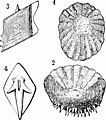File:A manual of zoology (1902) (20544399878).jpg

Original file (534 × 604 pixels, file size: 122 KB, MIME type: image/jpeg)
| This is a file from the Wikimedia Commons. Information from its description page there is shown below. Commons is a freely licensed media file repository. You can help. |
Summary
| DescriptionA manual of zoology (1902) (20544399878).jpg |
English: Title: A manual of zoology |
| Date | |
| Source |
https://www.flickr.com/photos/internetarchivebookimages/20544399878/
|
| Author | Internet Archive Book Images |
| Permission (Reusing this file) |
At the time of upload, the image license was automatically confirmed using the Flickr API. For more information see Flickr API detail. |
| Flickr tags InfoField |
|
| Flickr posted date InfoField | 20 August 2015 |
Licensing
This image was taken from Flickr's The Commons. The uploading organization may have various reasons for determining that no known copyright restrictions exist, such as: No known copyright restrictionsNo restrictionshttps://www.flickr.com/commons/usage/false
More information can be found at https://flickr.com/commons/usage/. Please add additional copyright tags to this image if more specific information about copyright status can be determined. See Commons:Licensing for more information. |
| This image was originally posted to Flickr by Internet Archive Book Images at https://flickr.com/photos/126377022@N07/20544399878. It was reviewed on 21 September 2015 by FlickreviewR and was confirmed to be licensed under the terms of the No known copyright restrictions. |
21 September 2015
Captions
Items portrayed in this file
depicts
some value
image/jpeg
48582a29f7c66ae24d56612797d3e703d8e7147f
124,485 byte
604 pixel
534 pixel
File history
Click on a date/time to view the file as it appeared at that time.
| Date/Time | Thumbnail | Dimensions | User | Comment | |
|---|---|---|---|---|---|
| current | 16:09, 21 September 2015 |  | 534 × 604 (122 KB) | Fæ | == {{int:filedesc}} == {{information |description={{en|1=<br> '''Title''': A manual of zoology<br> '''Identifier''': cu31924001021835 ([https://commons.wikimedia.org/w/index.php?title=Special%3ASearch&profile=default&fulltext=Search&search=insource%3A%... |
File usage
Global file usage
The following other wikis use this file:
- Usage on cs.wikipedia.org
